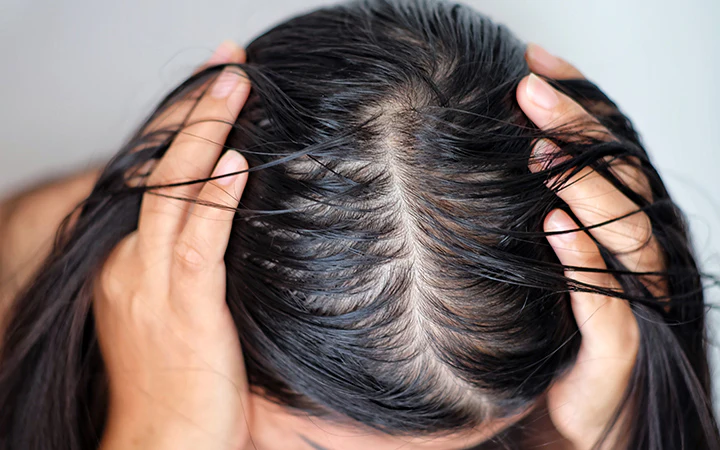Hair loss is a sensitive and common concern for many women, impacting not only appearance but also self-esteem and emotional well-being. While hair loss is often associated with men, many women face thinning hair or baldness due to various factors like genetics, hormonal imbalances, medical conditions, or aging. Hair transplants offer an effective and permanent solution for women experiencing these issues. This comprehensive guide will walk you through the hair transplant process, cost, benefits, and other considerations that women should be aware of before opting for the procedure.
Understanding Hair Transplants for Women
A hair transplant involves moving hair follicles from a healthy donor area (usually the back or sides of the scalp where hair is thicker) to areas experiencing thinning or baldness. The goal is to promote natural hair regrowth in a way that looks seamless and enhances the overall appearance.
Procedure Methods
The two main techniques used in hair transplants are Follicular Unit Extraction (FUE) and Follicular Unit Transplantation (FUT):
- FUE involves extracting individual hair follicles from the donor area and implanting them in the recipient area. This technique is less invasive, leaves minimal scarring, and has a shorter recovery period.
- FUT, on the other hand, involves removing a strip of the scalp from the donor area, from which individual follicular units are dissected and then implanted. This method may be more appropriate for women who need a larger number of grafts.
Key Considerations for Women
- Hair Loss Pattern
Women typically experience a different hair loss pattern compared to men. While men often develop receding hairlines or bald spots, women usually experience diffuse thinning across the scalp. Understanding the pattern of hair loss is critical in determining whether a hair transplant is a suitable option. - Donor Hair Density
Hair transplant success heavily depends on the availability of healthy hair in the donor area. Women must have sufficient hair at the back or sides of their scalp, where hair growth is usually more robust, to ensure good results. A surgeon will evaluate the density of this area to assess eligibility. - Realistic Expectations
Hair transplants can significantly improve hair density, but it’s important to maintain realistic expectations. The procedure may not fully restore hair to how it was before the hair loss began, but it can help create a noticeable improvement in thinning areas. A consultation with an experienced surgeon will help women set reasonable expectations based on their individual situation.
Hair Transplant Cost for Women
The cost of a hair transplant can vary widely depending on a few factors:
- Extent of Hair Loss: More severe hair loss means more grafts will be required, increasing the cost. On average, women need around 1,000 to 3,000 grafts, but this can vary.
- Technique Used: FUE is generally more expensive than FUT because it is more labor-intensive and time-consuming.
- Surgeon’s Experience and Location: The experience and reputation of the surgeon also influence the price. Surgeons in metropolitan areas like New York City may charge more due to the cost of living and higher demand.
Typical Cost Range:
Hair transplant procedures can cost anywhere from $3,000 to $15,000 depending on the aforementioned factors. Most health insurance plans do not cover hair transplants since it is considered a cosmetic procedure.
Hair Transplant Surgery for Women
Here’s a step-by-step breakdown of the hair transplant procedure:
- Consultation: A detailed evaluation with a surgeon helps determine whether the patient is a suitable candidate for a hair transplant. The surgeon will discuss expectations, review medical history, and examine the hair loss pattern.
- Preparation: On the day of surgery, the donor area is cleaned, and local anesthesia is applied to numb both the donor and recipient sites.
- Harvesting: Depending on the chosen method (FUE or FUT), hair follicles are harvested. FUE involves extracting individual follicles, while FUT requires removing a strip of scalp.
- Implantation: The harvested hair follicles are carefully implanted into the thinning or bald area, making sure to place them in a natural-looking pattern and angle to match existing hair.
- Recovery: After the procedure, the patient is provided with aftercare instructions, such as how to wash the scalp, avoid certain activities, and manage any discomfort. Mild swelling or scabbing may occur, but these typically resolve within a week.
Hair Transplant for Women: Before and After
Before-and-after photos are a powerful way to showcase the transformative effects of hair transplants. They allow potential patients to see the real results and set expectations. However, it’s crucial to consult with a qualified surgeon to ensure your expectations are aligned with your personal condition. Results may vary based on the degree of hair loss and the technique used, but most patients can expect fuller, more natural-looking hair in the transplanted areas within 6 to 12 months post-procedure.
Do Hair Transplants Work for Women?
Hair transplants can be highly effective for women dealing with hair loss. The success rate for women, when the procedure is performed by a skilled surgeon, can be quite high. However, the outcomes depend on factors such as the type of hair loss, hair quality, and the expertise of the surgeon. For women with conditions like androgenetic alopecia (female pattern baldness), hair transplants can offer a lasting solution with proper care.
Best Hair Transplant for Women
The best method for a hair transplant depends on individual needs:
- FUE: Preferred for women who want to avoid linear scars and prefer a quicker recovery. This method is ideal for small to medium areas of hair loss.
- FUT: Suitable for women who need a larger number of grafts and have no issue with a linear scar at the donor site. FUT often provides more density in fewer sessions.
Hair Transplant for Women in NYC
New York City offers many renowned hair transplant clinics that specialize in procedures for women. Clinics in this area often have highly experienced surgeons who can tailor procedures based on individual needs. Before choosing a clinic, it’s advisable to research and compare their expertise, success rates, patient reviews, and costs.
Hair Transplant for Women’s Hair Loss
Hair transplants are suitable for various types of hair loss in women, such as:
- Female Pattern Baldness (androgenetic alopecia): A hereditary condition leading to thinning across the scalp.
- Alopecia Areata: An autoimmune disorder causing patchy hair loss.
- Traction Alopecia: Hair loss due to tight hairstyles or excessive hair treatments. Each condition requires an individualized approach, and a consultation can help identify the most effective treatment.
Hair Transplant for Women’s Hairline
Women experiencing a receding hairline or thinning near the forehead may benefit from a hair transplant specifically targeting the hairline. This can help in creating a softer, fuller, and more natural-looking hairline, giving a youthful appearance. This is especially popular for women who are looking to correct a naturally high or receding hairline due to genetics or aging.
Hair Transplant for Thicker Hair in Women
Even women with thicker hair may experience thinning in certain areas, such as the crown or temples. A hair transplant can help boost density in these areas, enhancing the overall appearance of the hair without needing full scalp coverage.
Can Women Get Hair Transplants for Thinning Hair?
Yes, hair transplants are an effective solution for women with thinning hair. This procedure can fill in areas of sparse hair, improving overall volume and density. Women with thinning hair often experience a significant boost in confidence and self-esteem following a successful hair transplant.
Conclusion
Hair transplants offer a reliable and permanent solution for women dealing with various types of hair loss. With proper research, consultation, and care, women can achieve a fuller head of hair and regain their confidence. By understanding the procedure, costs, and potential benefits, you can make an informed decision about whether a hair transplant is the right choice for you.



